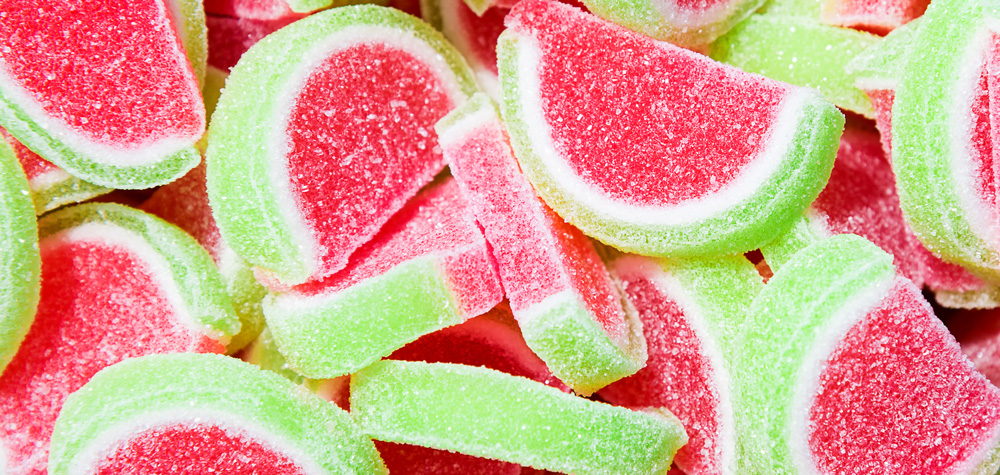

APPLICATION
Coating a chewy candy with sugar crystals
A sugar-coated candy shows tiny sugar crystals stuck to its whole surface. It enhances the chewing experience by combining the inner mellow texture and the grittiness of the surface.
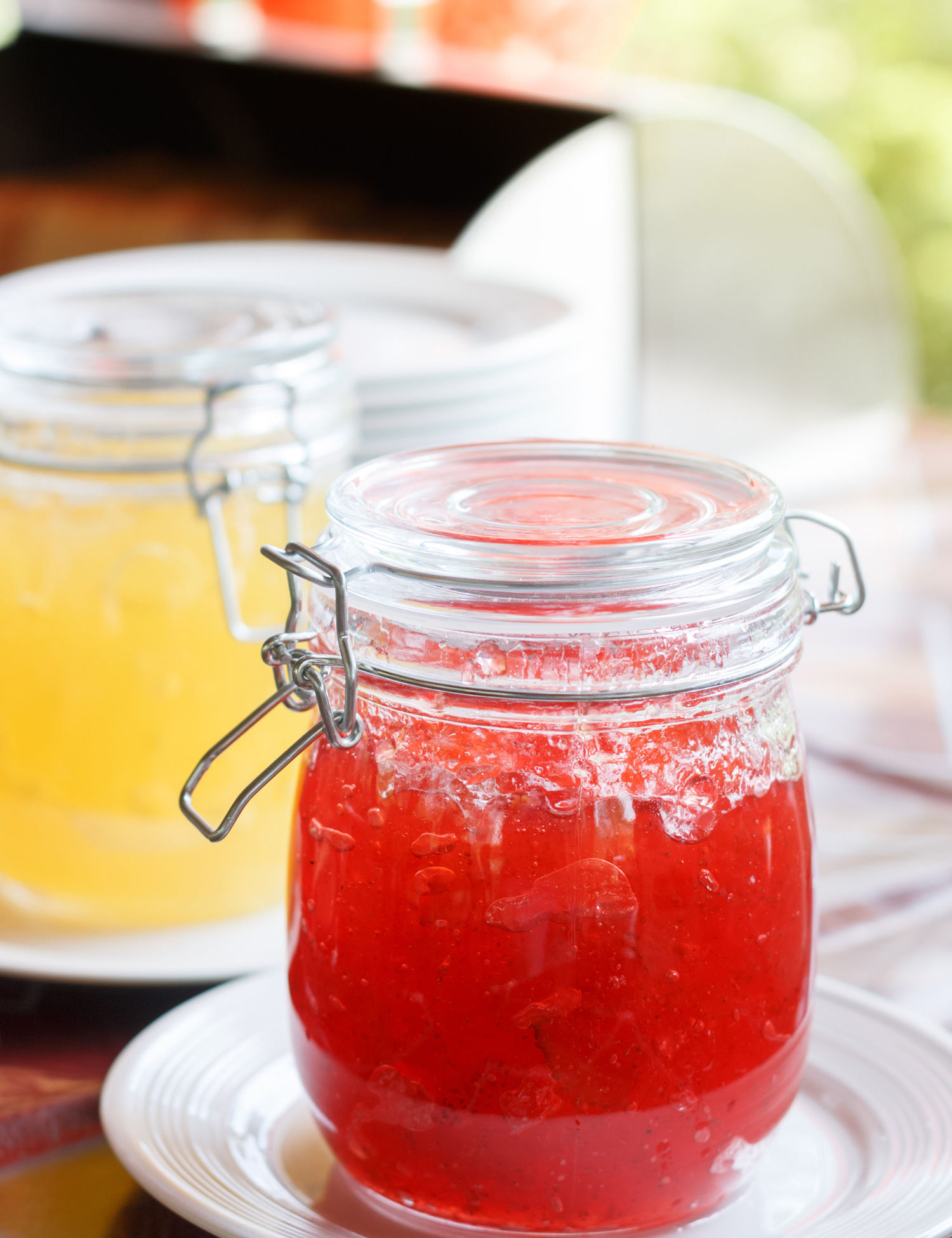

BASE
Core products
The core is generally a chewy candy: a hot sugar, gelatine, starch, and flavour solution is poured in a pre-formed shape moulded in starch, then left to set, and ultimately separated.
RECIPE
Ingredients
The main ingredient is caster sugar and calibrated sugar crystals.
The liquid used to stick the sugar crystals is simply water turned into food-grade steam.
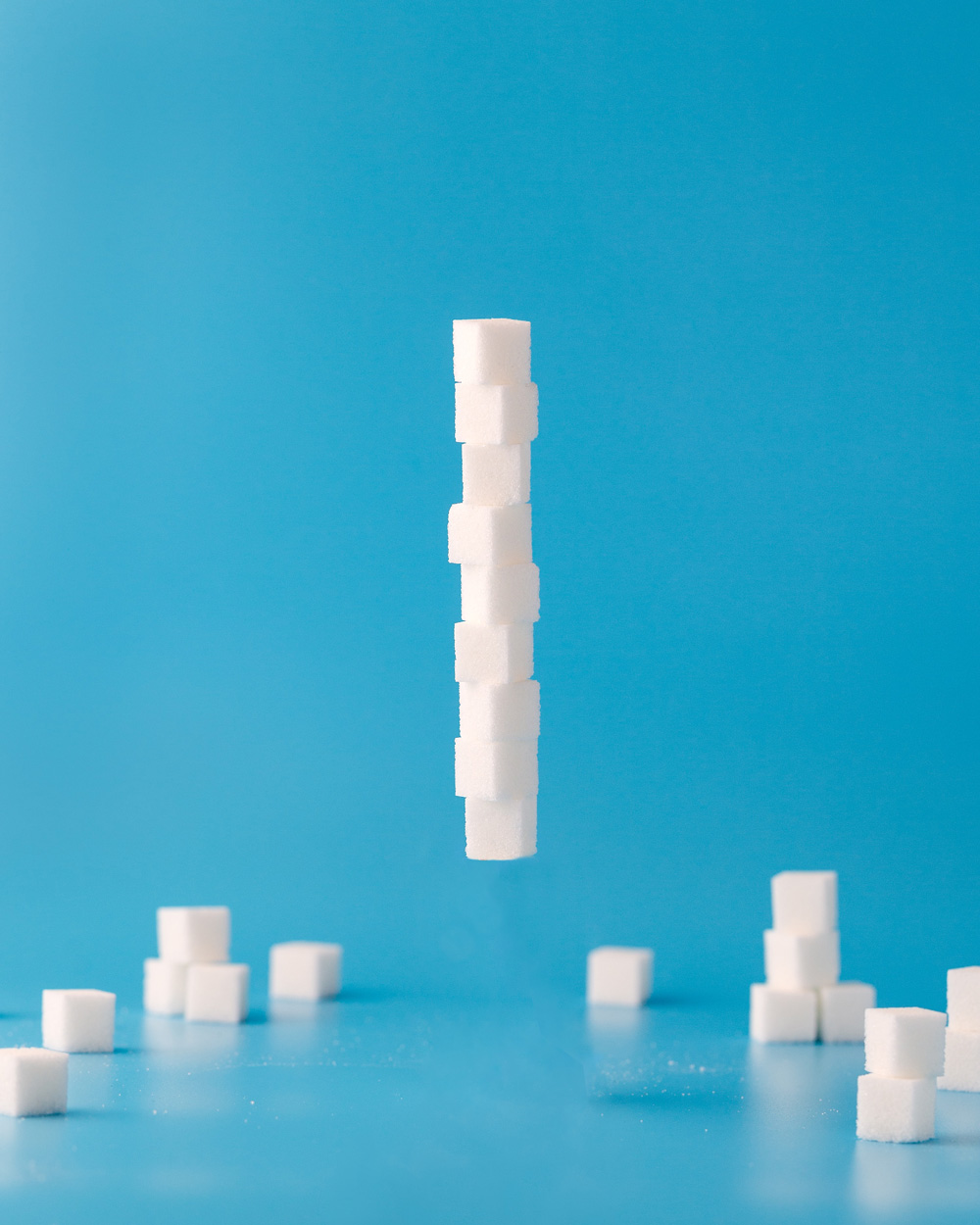





RECIPE
Ingredients
The main ingredient is caster sugar and calibrated sugar crystals.
The liquid used to stick the sugar crystals is simply water turned into food-grade steam.
PROCESS
How does it work?
The process consists of 2 operations: liquid and powder addition. They are carried out in 2 different systems to avoid build-ups.
Step 1.
Wetting by steam to dissolve the surface.
Step 2.
Addition of sugar in excess.
Step 3.
Sieving and recycling of the excess sugar.
PROCESS
Coating system
The main operation occurs in a rotary tumbler. The candies travel on a conveyor. They pass through a hood where steam is injected. The combined action of heat and water partially melts the sticky candy surface. The wet candies are discharged in the tumbler. The tumbler consists of one inner cylinder concentric to an outer cylinder.
The inner cylinder receives both the wetted candies and the sugar. Its end is perforated to remove the excess sugar. The sugar in excess falls on the inner wall of the outer cylinder. A helical screw is built between the inner and outer cylinders. Its direction is to pull back the excess sugar toward the infeed zone, where it falls onto the wetted candies again.
The feeder is adjusted to dose the quantity of sugar removed by the coated candies. The bed of sugar is maintained to a level such as allowing the candies to be immersed into a bed, preventing excess friction, and forcing the crystal into the wetted surface. It is a continuous operation. The rotation speed is adjusted to achieve a minimal residence time. After coating, the product needs a short setting time for the moisture to equilibrate and the wetted sugar to dry and crystallize again.
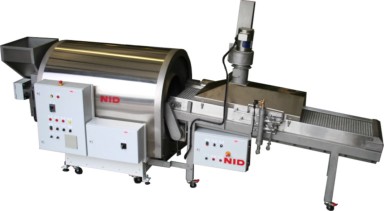

PROCESS
Coating system
Steam station and sugar coating tumbler, courtesy of DF Drouven GmbH.
PRODUCT EVALUATION
How do you measure your success?
Key quality features
Although a simple operation, the outcome must be evaluated.


Homogeneity
The candy is homogeneously coated with sugar. It is measured partially by the pickup rate and visually evaluated.
Adhesion
The sugar crystals adhere firmly to the candy.
Brightness
The sugar crystals retain the brightness and have not been dissolved into the surface.
Key quality parameters
The process has fixed and variable parameters to choose and play with:
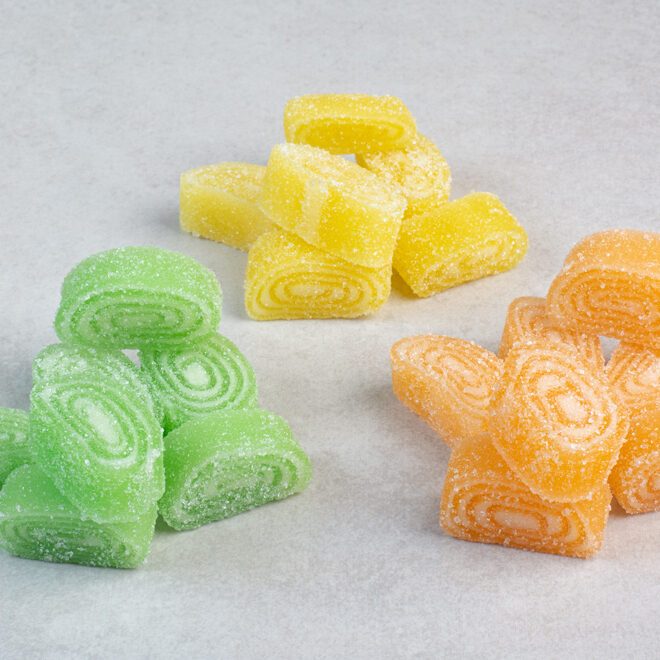

Tumbler design
Tumbler length, diameter and helical screw design, the inner volume.
Rotation speed and tilt angle
To adjust the residence time and dynamic volume of candies and sugar.
Sugar dosing
Adjusting the powder dosage in excess to provide a bed of sugar in which the candies roll.
APPLICATION
Discover more applications

